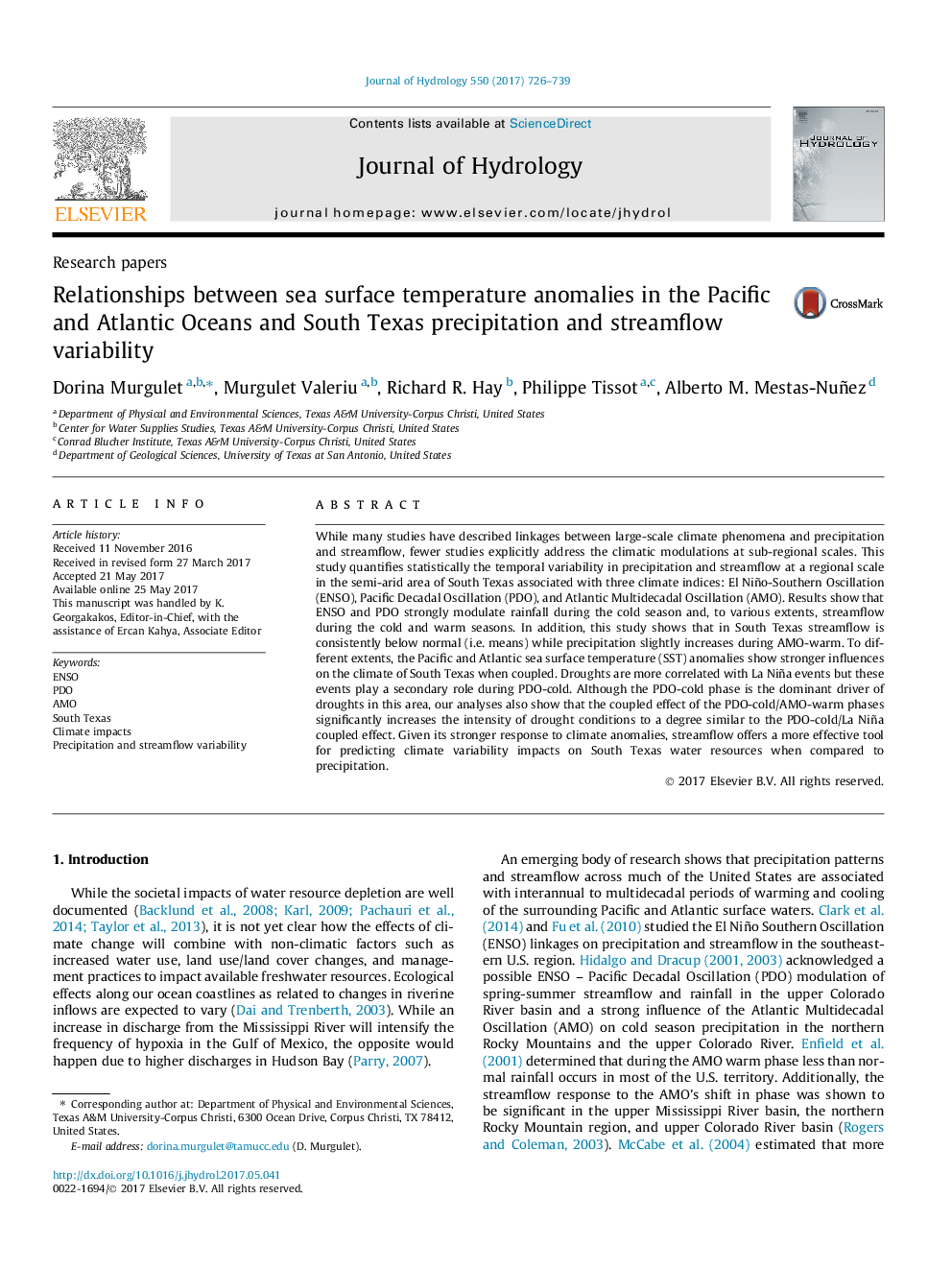| Article ID | Journal | Published Year | Pages | File Type |
|---|---|---|---|---|
| 5770789 | Journal of Hydrology | 2017 | 14 Pages |
â¢Coupled PDO-cold/AMO-warm correlates well with Texas droughts and South Texas streamflow droughts.â¢ENSO and PDO strongly modulate rainfall during the cold season.â¢The response of streamflow to climate phenomena is stronger than that of precipitation.
While many studies have described linkages between large-scale climate phenomena and precipitation and streamflow, fewer studies explicitly address the climatic modulations at sub-regional scales. This study quantifies statistically the temporal variability in precipitation and streamflow at a regional scale in the semi-arid area of South Texas associated with three climate indices: El Niño-Southern Oscillation (ENSO), Pacific Decadal Oscillation (PDO), and Atlantic Multidecadal Oscillation (AMO). Results show that ENSO and PDO strongly modulate rainfall during the cold season and, to various extents, streamflow during the cold and warm seasons. In addition, this study shows that in South Texas streamflow is consistently below normal (i.e. means) while precipitation slightly increases during AMO-warm. To different extents, the Pacific and Atlantic sea surface temperature (SST) anomalies show stronger influences on the climate of South Texas when coupled. Droughts are more correlated with La Niña events but these events play a secondary role during PDO-cold. Although the PDO-cold phase is the dominant driver of droughts in this area, our analyses also show that the coupled effect of the PDO-cold/AMO-warm phases significantly increases the intensity of drought conditions to a degree similar to the PDO-cold/La Niña coupled effect. Given its stronger response to climate anomalies, streamflow offers a more effective tool for predicting climate variability impacts on South Texas water resources when compared to precipitation.
